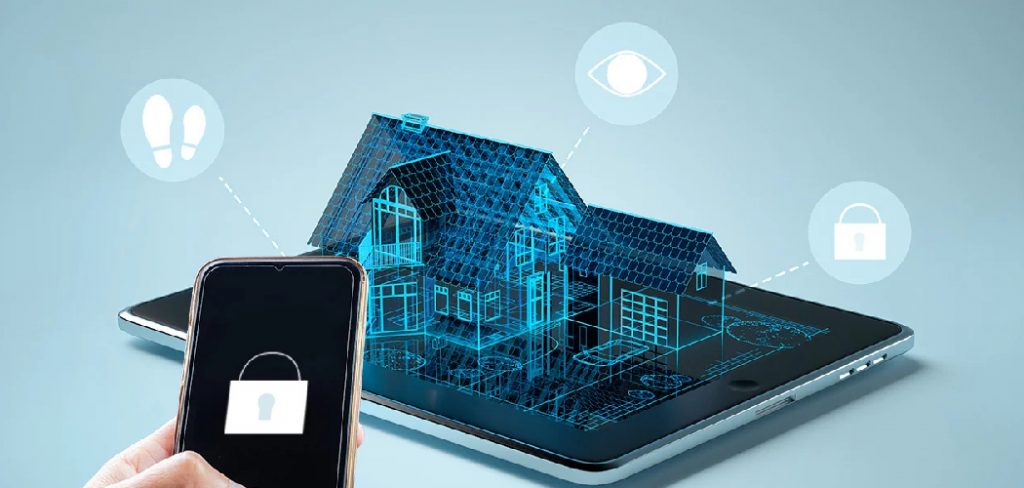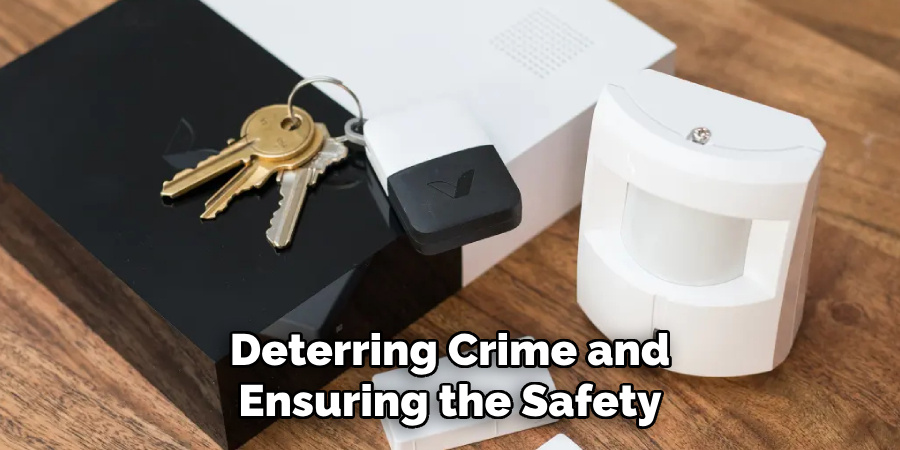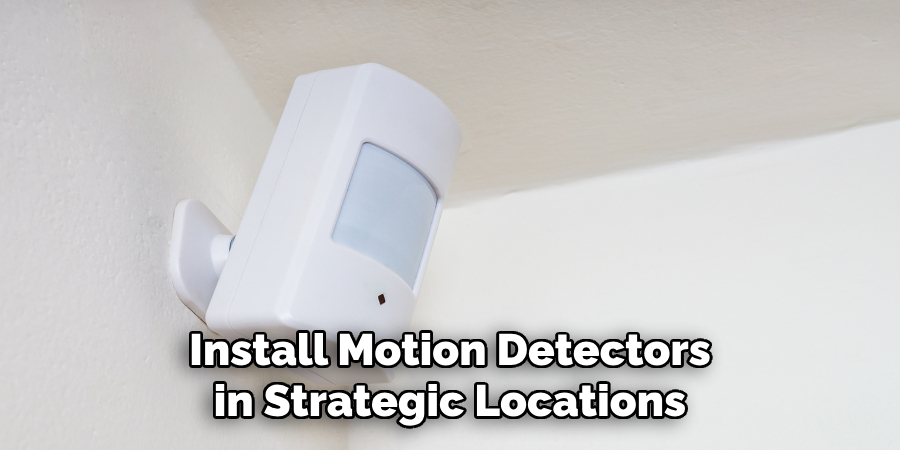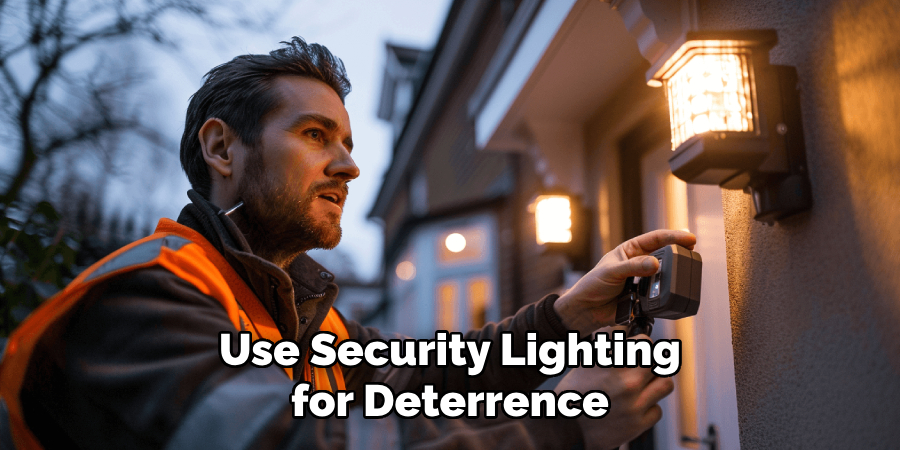In today’s world, ensuring the safety of one’s home has become more important than ever. A well-designed home security system not only protects your property from intruders but also provides peace of mind, knowing that your family and belongings are safe.

This guide will walk you through how to design a home security system. Whether you’re looking to install a basic setup or an advanced smart security system, this introduction will help you understand the options available and how to tailor them to fit your specific needs and budget.
Importance of Home Security Systems
Home security systems are crucial in deterring crime and ensuring the safety of homes and families. In addition to protecting against intruders, modern security systems can alert homeowners to potential hazards such as fires, carbon monoxide leaks, and flooding.

The presence of a security system can also serve as a visible deterrent to potential criminals, reducing the likelihood of attempted break-ins. Beyond safety, having a security system may reduce insurance premiums, as many insurance companies offer discounts to homeowners who invest in such protective measures. In a world where threats can be unpredictable, investing in a home security system is a proactive step toward safeguarding your property and loved ones.
Assess Your Home Security Needs
Before designing a home security system, it’s essential to evaluate your specific needs to ensure you implement the most effective solutions. Start by considering the size and layout of your property, identifying entry points such as doors and windows that may require surveillance or sensors. Evaluate your neighborhood’s crime rate and specific risks your home may face, whether from intruders, environmental hazards, or other vulnerabilities.
Additionally, determine whether you desire a basic security setup or a system integrated with smart home features that offer remote monitoring and control. Assessing your lifestyle needs, such as the presence of pets or children, is also crucial in selecting the appropriate alarm systems and motion detectors. By comprehensively assessing these factors, you can tailor your security system to align with your priorities and effectively protect your home and family.
10 Methods How to Design a Home Security System
1. Assess Your Home’s Security Needs
The first step in designing a home security system is assessing the specific needs of your home. Consider the size of your home, the number of entry points (doors, windows), and any vulnerable areas such as basement windows or second-story balconies. Homes located in isolated areas or those that have large yards may need additional monitoring equipment to cover more space. Understanding these unique factors helps you create a tailored security plan that addresses the weaknesses and strengths of your property.
Start by walking around your home and noting all entry points, weak spots, and any areas where intruders might try to gain access. This initial assessment forms the foundation of your security system design.
2. Decide on a Wired vs. Wireless System
Next, decide whether to use a wired or wireless security system. Wired systems connect security components like cameras, sensors, and alarms through physical wiring, offering stable performance but requiring professional installation and potentially extensive work to conceal the wires. Wireless systems, on the other hand, are easier to install and allow flexibility in placement, as they use Wi-Fi or cellular connections to communicate. Wireless systems are typically easier to expand and can be relocated without major hassle.

Choosing between wired and wireless depends on your home’s layout, your preference for installation, and the level of permanence you desire.
3. Choose the Right Security Cameras
Cameras are an integral part of any security system, providing real-time surveillance and recording evidence in the event of a break-in. Select cameras based on their placement and your security goals. Outdoor cameras should be weather-resistant and provide clear images even in low light. For this, consider infrared (IR) or night vision cameras. Cameras with motion detection and alerts can save storage space by only recording when movement is detected.
Indoor cameras, meanwhile, should blend into your home’s decor to avoid being easily spotted. For full coverage, a mix of outdoor and indoor cameras, along with doorbell cameras, ensures that all key areas of your home are monitored.
4. Install Motion Detectors in Strategic Locations
Motion detectors are another key component in your home security system. These devices detect movement within their range and can trigger alarms or send alerts when motion is detected in unauthorized areas. Place motion detectors in areas where an intruder is likely to pass, such as hallways, stairwells, and large rooms with multiple entry points.
Additionally, consider placing motion detectors near vulnerable access points like sliding doors, windows, or any other areas that might not be visible through security cameras. Some advanced motion detectors can distinguish between human movement and other triggers like pets, reducing the number of false alarms.

5. Incorporate Door and Window Sensors
Installing door and window sensors is crucial for detecting unauthorized access. These sensors are triggered when a door or window is opened, sending an alert or triggering an alarm. They are relatively easy to install and provide an immediate response to a breach in security.
Place sensors on all exterior doors, including those leading to garages or basements, and on windows that are easily accessible from the outside. Door and window sensors can also be integrated into smart home systems to automatically lock doors or windows when a breach is detected, adding another layer of protection.
6. Consider Smart Locks for Keyless Entry
Smart locks can enhance the overall security of your home by providing keyless entry and remote locking or unlocking capabilities. These locks allow you to control access to your home via a smartphone app, which is particularly useful for letting in guests, service providers, or family members when you’re not home. Many smart locks integrate with security systems, allowing you to lock doors automatically when arming your system.
When choosing smart locks, consider those that provide features such as temporary access codes, automatic locking, and integration with your home automation platform. This ensures greater control over who enters and exits your home and helps keep your property secure.
7. Use Security Lighting for Deterrence
Lighting plays an important role in home security. Burglars are less likely to target homes that are well-lit, as it increases the risk of being caught on camera or seen by neighbors. Install motion-activated outdoor lighting around your home’s perimeter, particularly near entry points like doors, windows, and garage areas. These lights will turn on when motion is detected, deterring potential intruders and illuminating dark areas where someone might try to hide.

Additionally, consider using smart lights that you can control remotely. Set schedules for your lights to turn on and off when you’re not home, giving the illusion that someone is inside.
8. Incorporate a Central Control Hub
A central control hub is essential for managing and monitoring your home security system. Most modern security systems include a control panel or hub that allows you to arm and disarm the system, view camera feeds, and monitor alerts. Many of these systems also come with smartphone apps, enabling you to manage your home’s security remotely.
When designing your system, choose a hub that integrates all your devices, from cameras and sensors to smart locks and alarms. This ensures seamless communication between devices and provides a user-friendly interface for controlling your home’s security.
9. Add Environmental Sensors for Additional Protection
Beyond protecting against intruders, consider adding environmental sensors that detect other hazards like fire, smoke, carbon monoxide, and water leaks. These sensors provide alerts in case of environmental dangers, giving you time to react and minimize damage. For example, a water leak sensor can alert you to a flood in your basement, while a smoke detector integrated with your security system will notify you and emergency services in the event of a fire.
Integrating these sensors into your security system ensures comprehensive protection for both your home and your family.
10. Choose a Professional Monitoring Service
The final method in designing a home security system is deciding whether to include professional monitoring. Many security systems offer 24/7 monitoring services, where a third party keeps an eye on your system and responds to alerts, such as dispatching emergency services if a break-in is detected. This service provides an added layer of protection, ensuring that even when you’re away or unable to respond, your home remains secure.
Professional monitoring is especially helpful in case of emergencies when you may not be able to reach your phone to check alerts. When selecting a monitoring service, compare plans based on price, response time, and customer reviews to find the best fit for your needs.
Conclusion
In conclusion, designing a home security system involves a series of thoughtful steps, each contributing to the overall safety and efficiency of your system. By assessing your home’s vulnerabilities, choosing the right equipment, and integrating modern technologies like smart locks, cameras, and environmental sensors, you can create a comprehensive security solution tailored to your home. Thanks for reading, and we hope this has given you some inspiration on how to design a home security system!
About
Safety Fic is a distinguished figure in the world of Diy design, with a decade of expertise creating innovative and sustainable Diy solutions. His professional focus lies in merging traditional craftsmanship with modern manufacturing techniques, fostering designs that are both practical and environmentally conscious. As the author of diy, Safety Fic delves into the art and science of Safety Fic-making, inspiring artisans and industry professionals alike.
Education RMIT University
(Melbourne, Australia) Associate Degree in Design (Safety Fic) Focus on sustainable design, industry-driven projects, and practical craftsmanship. Gained hands-on experience with traditional and digital manufacturing tools, such as CAD and CNC software.
Nottingham Trent University
(United Kingdom) Bachelor’s in diyfastly.com and Product Design (Honors) Specialized in product design with a focus on blending creativity with production techniques. Participated in industry projects, working with companies like John Lewis and Vitsoe to gain real-world insights.
Publications and Impact
In diy, Safety Fic his insights on indoor design processes, materials, and strategies for efficient production. His writing bridges the gap between artisan knowledge and modern industry needs, making it a must-read for both budding designers and seasoned professionals.
